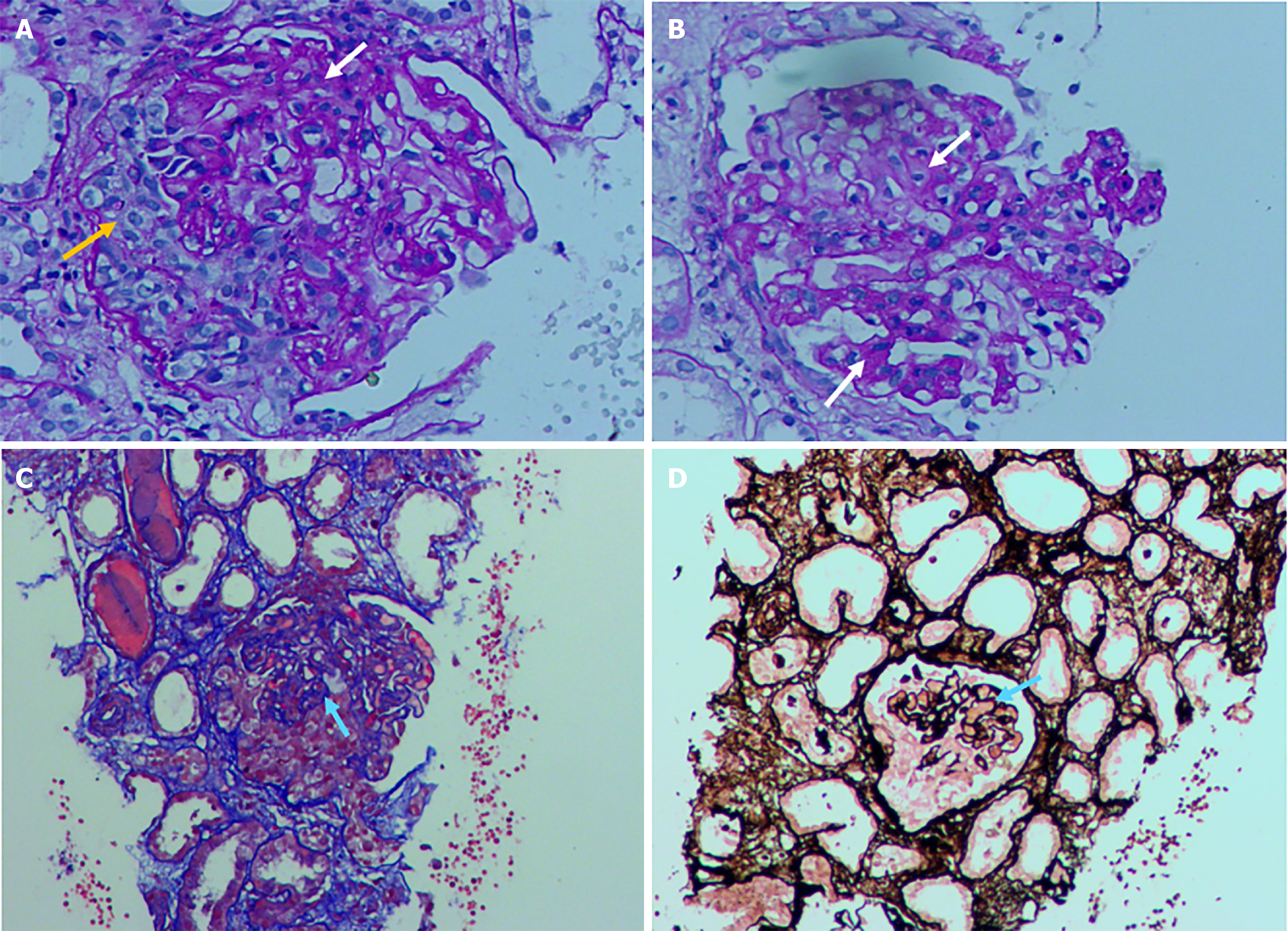Copyright
©The Author(s) 2025.
World J Clin Cases. Jul 6, 2025; 13(19): 102212
Published online Jul 6, 2025. doi: 10.12998/wjcc.v13.i19.102212
Published online Jul 6, 2025. doi: 10.12998/wjcc.v13.i19.102212
Figure 2 Light microscopic picture of renal pathology.
The light microscopy specimen in this case reveals the presence of five glomeruli, including three marginal glomeruli with crescentic lesions (3/5), while only two intact glomeruli are observed. PASM-Masson staining: Glomeruli with suspected erythrophilic deposits, segments with suspicious “pegs”. Renal tubular interstitium with severe chronic lesions, multiple small foci of tubular atrophy, basement membrane thickening, some tubular epithelial cells with large nuclei, and some cells with intranuclear inclusion bodies. Focal renal tubular epithelial cells with brush border detachment, some renal tubular epithelial cells with fine apparent granular degeneration and vacuolar degeneration, and tubular lumen with visible protein tubular pattern. Interstitial fibrosis and edema, multifocal infiltration of single nucleated cells, and eosinophils are seen in small foci. Segmental or total hyaline degeneration of small arteries. A and B: Periodic acid-Schiff stain of glomeruli, fibrous necrosis and crescent formation can be seen; C: Masson-Trichrome, glomeruli with suspected erythrophilic deposits, segments with suspicious “pegs”; D: Periodic-acid silver methenamine. White arrows: Fibrinoid necrosis; yellow arrows: Fibrocellular crescent; blue arrow: Basement membrane thickening.
- Citation: Li MR, Li LY, Tang J, Sun J. Chronic hepatitis B triggering antineutrophil cytoplasmic antibody-associated vasculitis complicated by glomerulonephritis: A case report. World J Clin Cases 2025; 13(19): 102212
- URL: https://www.wjgnet.com/2307-8960/full/v13/i19/102212.htm
- DOI: https://dx.doi.org/10.12998/wjcc.v13.i19.102212









